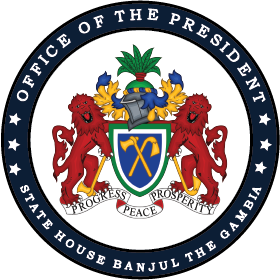OBJECTIVE
To build and strengthen national capacity and competencies in Science, Technology and Innovation (STI) that will enhance the attainment of economic development and national competitiveness.
CONTENT
Policy Objectives, Policy Foundations, sector-specific Programmes
Short term Objectives:
- I. Train personnel in the management, dissemination and implementation of the policy;
- II. Strengthen scientific research capacity to develop STI;
- III. Set up a comprehensive central database on STI to serve all sectors of the economy;
- IV. Provide modern and appropriate ICT infrastructure;
- V. Strengthen data collection and analytical capacity;
- VI. Set up a data bank with appropriate data management facilities and resources;
- VII. Promote awareness and participation in STI to increase the number of students offering STI-related areas at all levels (both formal and non-formal) of the education system;
- VIII. Set adequate standards to strengthen the delivery of quality STI.
Medium-term Objectives:
- I. Enhance collaboration nationally and internationally to foster STI knowledge transfer, adaption and diffusion;
- II. Develop and strengthen capacity for STI by producing a trained and skilled population competent to transform the nation into a knowledge-based economy;
- III. Further, develop and strengthen research capacity and dissemination of scientific findings;
- IV. Develop technological and indigenous knowledge through innovative links with industries, to add value to the country’s products and services;
- V. Establish the legal and regulatory framework that ensures effective use of STI for national development with adherence to set standards.
Long term Objectives
- I. Further strengthen scientific research as a means to spur innovation and entrepreneurship especially among the youth and women to enhance employability, among others; 50 Ministry of Higher Education, Research, Science and Technology
- II. Strengthen the incorporation of indigenous technology and traditional medicine in the application of STI in the day-to-day living of the citizens;
- III. Transfer, adapt and assimilate appropriate technologies;
- IV. Create and sustain a knowledge-based economy in which the citizens can effectively apply scientific and technological knowledge and skills in resolving socio-economic problems;
- V. Modernize agriculture and other national industries through STI to create quality products and services for sustained economic growth;
- VI. Use STI to modernize agriculture and create quality products and services for sustained economic growth.
Policy Document
-
827.29 KB
Policy Document
Published: 13/12/2021
Sectors
-
Ministry of Public Service
6 documents -
Office of The Vice President
3 documents -
Ministry of Agriculture, Livestock and Food Security
8 documents -
Ministry of Basic and Secondary Education
2 documents -
Ministry of Defence
3 documents -
Ministry of Environment, Climate Change and Natural Resources
9 documents -
Ministry of Finance and Economic Affairs
11 documents -
Ministry of Foreign Affairs and International Cooperation
1 document -
Ministry of Health
30 documents -
Ministry of Higher Education, Research, Science and Technology
3 documents -
Ministry of Communications and Digital Economy
24 documents -
Ministry of Interior
3 documents -
Ministry of Justice
1 document -
Ministry of Petroleum and Energy
5 documents -
Ministry of Trade Industry and Employment
8 documents -
Ministry of Transport Works and Infrastructure
3 documents -
Ministry of Tourism and Culture
3 documents -
Ministry of Women, Children and Social Welfare
12 documents -
Ministry of Youths and Sports
2 documents -
Ministry of Land and Regional Government
1 document -
Ministry of Fisheries and Water Resources
3 documents -
Office of The President
0 documents

